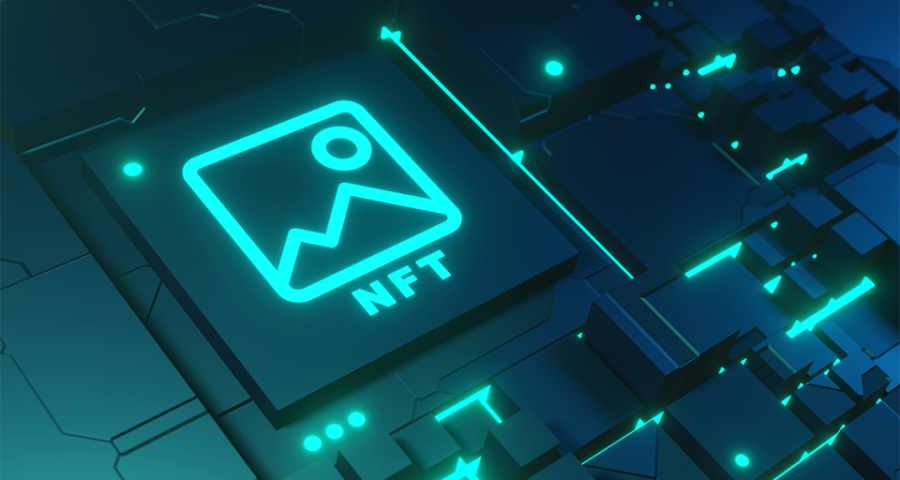NFTs are a new way of acquiring ownership of a digital asset. In March 2021 alone, more than $220 million worth of NFT were sold.
Though some may say that we are currently in a bubble, it is clear that the underlying technology is here to stay.
And this technology has many uses, even beyond the world of arts and entertainment.
Why are there so many possible uses for NFTs?
The identity of an NFT is distinct (it is one-of-a-kind) and its ownership can be confirmed through the blockchain ledger.
The blockchain is extremely secure and impossible to hack unless you use supercomputers that haven’t been invented. It cannot be destroyed either without a planet wide power outage. Blockchains are also public, and they don’t require any permissions before you can use them. Which means anyone can use them.
They are also based on DeFi (Decentralized Finance) where there is an absence of intermediaries such as banks. This eliminates the need to trust a third party.
A list of interesting current and future uses for NFTs:
1. Gaming
In-game items, elements, etc. can be tokenized. In fact, this has already been brought into reality by the Axie Infinity game. This is an Ethereum based game that has earned $700 million in revenue this year.
A large number of its players are from developing countries, such as the Philippines, Brazil, and Venezuela that were damaged greatly by the Covid Pandemic, and where local currencies are weak. They aim to make money with the game.
Two types of tokens can be earned:
- Smooth Love Potions
- Axie Infinity Shards
There was a recent jump in the price of AXS, which sparked the rush to earn money with the game. The demand rose enough for Binance to offer an SLP-peso trade.
2. In logistics
Using the blockchain, the product’s authenticity and origin can be verified. This would help ensure quality control, because of how transparent and reliable the blockchain is.
In the auto industry, this may help with cutting costs as you know exactly where each item came from.
There is also potential for this in the food industry, by showing where the food has been and how long it spent there. It has a similar gravity for the perishables industry.
As you cannot counterfeit items, there are also applications for the supply chains of luxury brands.
It can also help to see where and how sustainable and recyclable materials are used.
3. Real Estate
It can be used for real estate both in the real and virtual world.
The Mars House, created by artist Krista Kim is an example of virtual real estate. This house emanates a healing atmosphere and is made of light. It also has musical accompaniment. It was rendered using Unreal Engine. It was sold as an NFT for $512,000.
For real estate in the real world, NFTs could be a way to check ownership history. It could also be used to verify titles.
As the ownership is recorded on the blockchain ledger, this means that the holder would eternally own the piece of real estate.
4. Documentation, certification, licenses and identification.
The Non-Fungibility (that they cannot be interchanged) of NFTs mean that they can be used for tokenization of documentation, such as medical records, licenses, and qualifications.
These documentations can be issued on the blockchain. So, these can be traced back to the owner. Thus, situations such as identity theft can be prevented. Similarly, forgeries of licenses can be prevented.
This gives users more control over their information.
For instance, the Republic of San Marino has adopted NFT Covid-19 passports.
5. Patenting
Patents are an illiquid asset. This is because they are intellectual property. Patents could be tokenized. This would make it safer for patent holders to commercialize their patents. This would also make transactions more cost-effective, along with being much simpler than the existing system.
IBM has collaborated with IPwe, an IP ecosystem platform, to tokenize patents. They have also already created a marketplace for patents on the blockchain.
Jeffrey Neuburger, head of the Blockchain Group at Proskauer Rose LLP, said the concept represents an example of a “real business allocation for NFTs.”
6. Domain name ownership
Blockchain domain names are publicly recorded in a permanent registry that cannot be altered, which helps with security concerns. However, wallet addresses are difficult to remember.
To make a wallet address more memorable, a service such as the Ethereum Name Service (ENS) or Unstoppable Domains can be used to give a name to your wallet that is unique.
Users can buy and sell their names as well, with the more popular names having higher prices.
7. Fractional ownership
This is related to the concept of creators offering “shares” of their NFT. This allows you to own part of an NFT. This can be more cost-effective than buying the whole NFT. As fractional NFTs can be traded, this also means more buyers and sellers.
It could be used to do something like owning a piece of a famous painting.
8. Tickets
This would lead to a closer relationship between artists and fans. Here, the artist could possibly receive royalties on resales as well.
NFTs are an incredibly promising technology, with many possible future applications. This is a very simple list of ideas. It’s highly possible we’ll see even more applications.


Leave a Reply